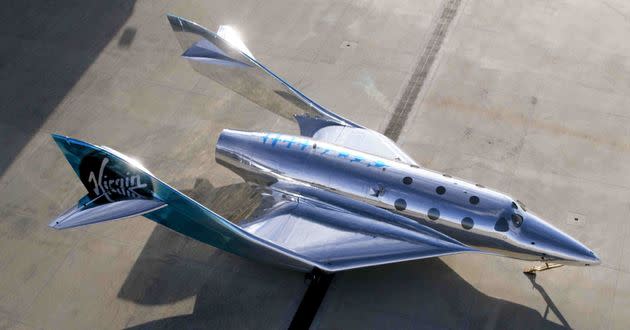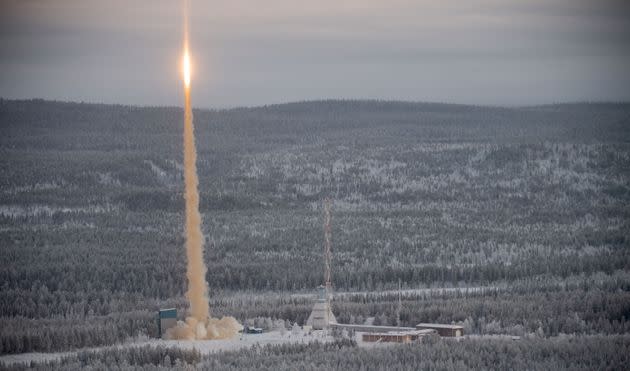
Virgin Galactic’s second suborbital rocket powered crewed spaceplane
We could soon all be enjoying sunny Sydney in the space of just two hours, by travelling via space – just make sure you clench your bum during the flight.
Yes, research from the UK Civil Aviation Authority (CAA) suggests torturous long-haul flights might be to get a much-needed upgrade – and will one day become out of this world.
The study suggested that, within a decade, flights from London to the other side of the world could take less than two hours by going into space.
Right now, travelling more than 10,000 miles to the other side of the planet takes around 23 hours, give or take. The fastest ever attempt from London to Sydney was back in 1985, and even that still took 17 hours.
Meanwhile, any other suborbital flights from high-fliers like Sir Richard Branson’s Virgin Galactic or Jeff Bezos’s Blue Origins cost six-figures.
But the CAA hopes that these short space trips could soon be accessible to everyone – and get you on your holiday faster, too.
The CAA-funded research published in the journal Aerospace Medicine and Human Performance concluded: “Commercial suborbital space flights are now available for tourism and scientific research, and are ultimately anticipated to mature into extremely fast point-to-point travel, eg London to Sydney in less than two hours.”
It works by using a G-force (a measure of acceleration) four times the usual strength of the Earth’s gravity for 20 to 30 second during ascent to catapult the plane away from the planet. G-force is then used again at six times Earth’s strength, during the descent for 10 to 15 seconds.
This would, obviously, have a bit of an impact on the body, as the researchers discovered.

The launch of the SubOrbital Express 3 rocket from the Esrange Space Centre in Jukkasjärvi, northern Sweden.
Twenty-four people aged between 32 and 80 were placed in an RAF centrifuge which re-creates the G-forces for such a flight.
They experienced a heavy sensation on the chest, which limits the ability to breathe, reduce oxygen intake, affect heart rhythm and move blood away from the brain, as well as the “greying out” of peripheral vision.
This all sounds less than ideal – but the scientists found all of these quickly returned to normal after the periods of high G-force passed.
Only one person lost consciousness, and they came round afterwards.
The CAA’s medical lead for space flights, Dr Ryan Anderton, told The Times: “Physiological responses are likely to be benign for most passengers.”
This means not all passengers would have to be in top-tier health, unlike astronauts.
In fact, being older could help as “stiffer arteries” could stop blood pooling away from the brain, according to Anderton.
We are still some years away from this being a reality though, as research is still ongoing as to what health conditions might be exacerbated by such flight.
For the time being though, Anderton’s team did identify one quick fix.
He explained: “Simple measures such as tensing or squeezing your lower legs or buttocks while the onset of [high G forces] came on were sufficient to reduce [the impact].”
Better start preparing with your squats now then, as Anderton said we need to start preparing, ASAP.
“Human space flight from these locations is absolutely possible,” the researcher said. “With companies showing interest in potentially launching from the UK … we need to be prepared [and] able to understand how our passengers, UK citizens, might be affected when they go on a suborbital space flight.”
